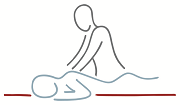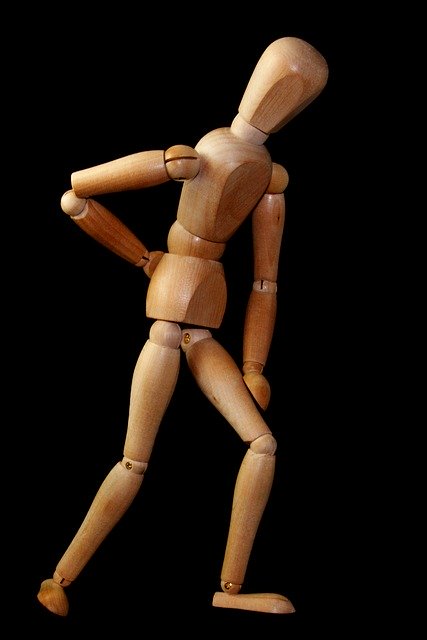Sciatica is a symptom, not a diagnosis.
The term “Sciatica” means that you have pain radiating down your leg from your buttocks to your feet. Often, it’s not the whole way down the leg, but buttocks and thighs are commonly affected. This pain is caused by compression of the Sciatic nerve. It usually occurs on one side only.
If you have symptoms on both sides or any loss of bladder / bowel control, please see your doctor urgently.
The sciatic nerve is the longest and thickest nerve in the human body and is formed by the joining of five nerve roots emerging from the lower spine. In parts it can be up to 2cm wide. It is so large that it needs its’ own blood supply which it receives from a named branch of the inferior gluteal artery.
When leaving the spinal cord, the Sciatic nerve splits into two branches and travels through the buttocks and down the back of the thighs all the way to the heels and soles of the feet. This innervates the muscles in the back of the thigh (Hamstrings). Once it reaches the knee, it splits again to innervate the muscles of the lower leg and foot through the Tibial and Fibular nerves.
Common Symptoms of Sciatica include a sharp pain or tingling that starts in the lower back or buttock and travels down the leg. Pain is usually worse when standing or sitting still and can feel better when lying or walking.
The most common cause of true Sciatica is a herniated (slipped) disc that is irritating or pressing on the nerve as it leaves the lower spine. You should see your doctor to get this assessed and treated.
However, there are a number of other causes of Sciatica – like symptoms such as:
Poor posture,
Hours of sitting,
Tight muscles in lower back or buttocks (Piriformis muscle),
Pregnancy.
These can usually be self-treated with change in lifestyle or some help from a Soft Tissue Therapist.
Some gentle exercises may help to stop the symptoms returning including:
Core muscle stretching and strengthening (to support the spine),
Hamstring stretches (to decrease stress in lower back) and
Gentle aerobic exercise such as walking to improve general fitness.
Please get in touch if you need help or advice about this common condition.

